Crab Spiders
I first began to pay attention to crab spiders when I noticed the beautiful pink coloration on the backs of otherwise white spiders, which served to assist in their camouflage in some flowers:
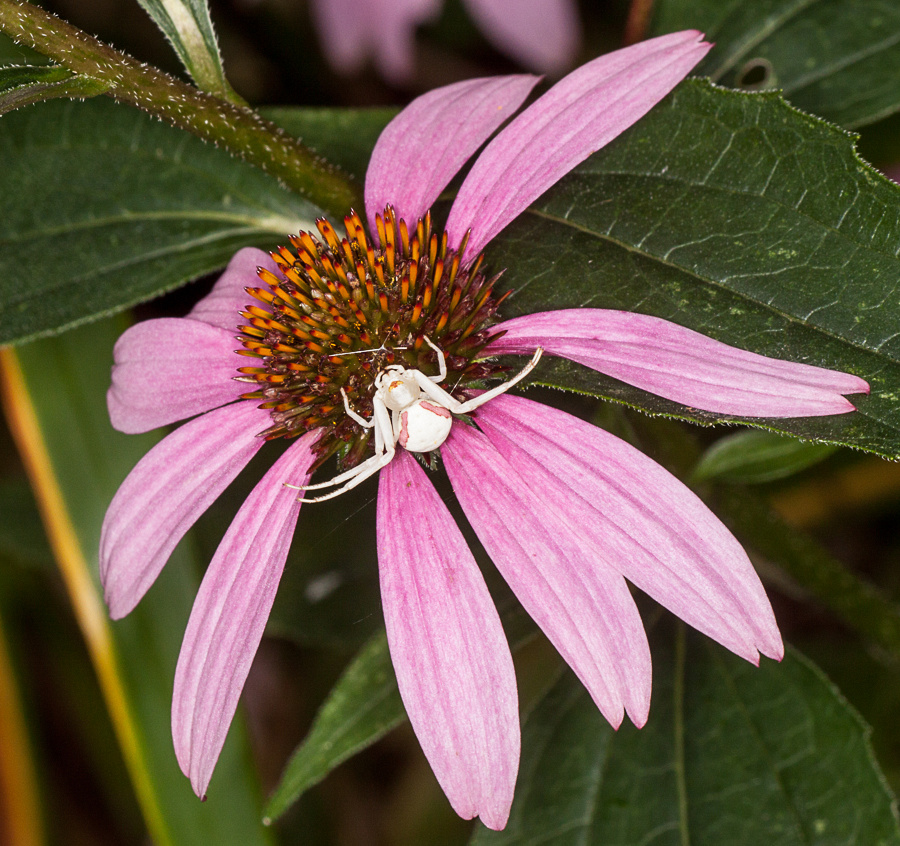

Once I was aware of that, I quickly came to realize that they were present in relatively large numbers throughout the yard and neighborhood, on a variety of flowers, and that they had a distinctive shape and behavior patterns. They would sit patiently, in one flower, in virtually the same location, all day - day after day, waiting for a meal to arrive. The two front pairs of legs widely spread, reading to grasp on to anything that came within their reach:
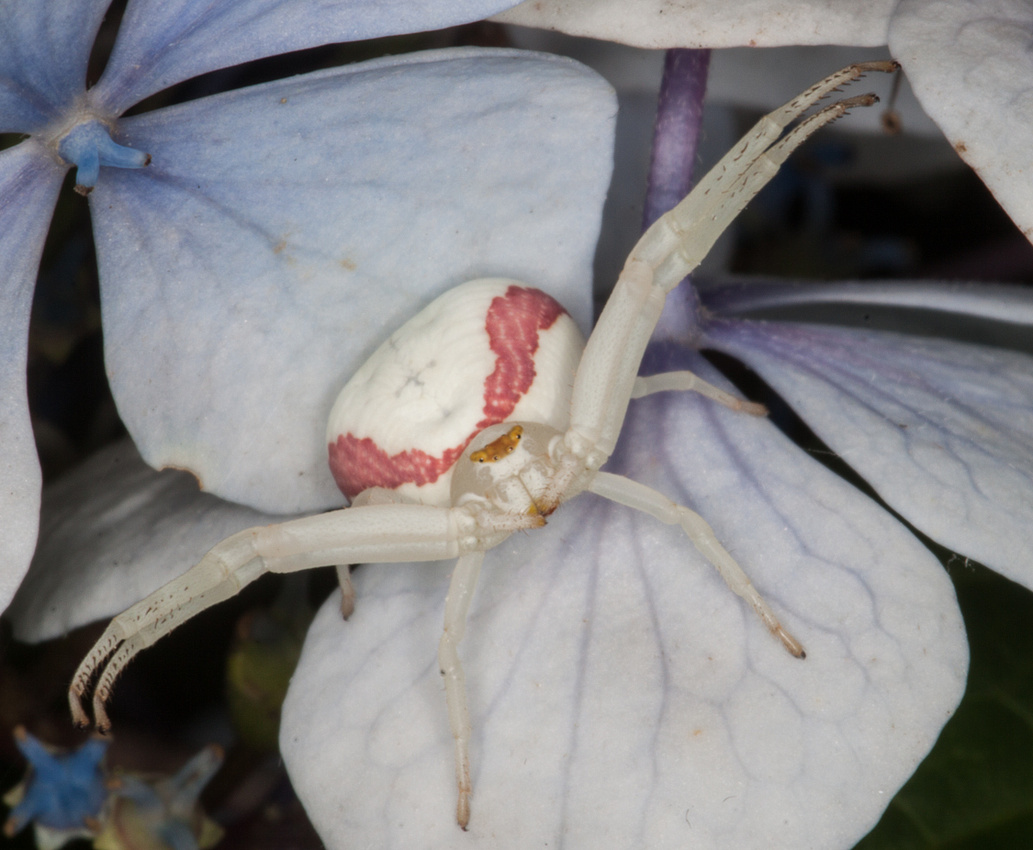

[in hydrangea]

 [up close]
[up close]


[in magnolia]
Their hunting technique was relatively straightforward: simply sit still until the prey approached, then lurch forward, quickly grasp, and inject a toxin that almost immediately paralyzed the victim. Digestive enzymes are injected. After a while, that digested juices of the victim and ingested and the hard exoskeleton of the arthropod prey is discarded, and the process repeats itself.
Interestingly, prey is generally large relative to the female crab spiders. The female has a body that is less than one centimeter (quarter of an inch or so) across, although the spider seems much larger with her arms extended as she awaits the opportunity to pounce, with a "wing span" of 2 to 3 cm (one inch).
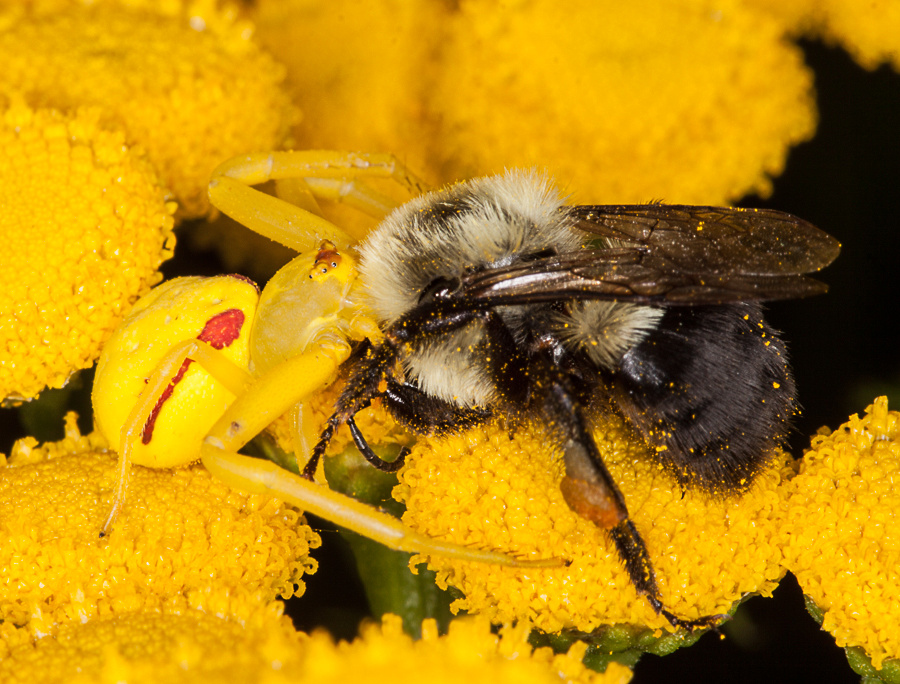

[bumble bee on the menu]
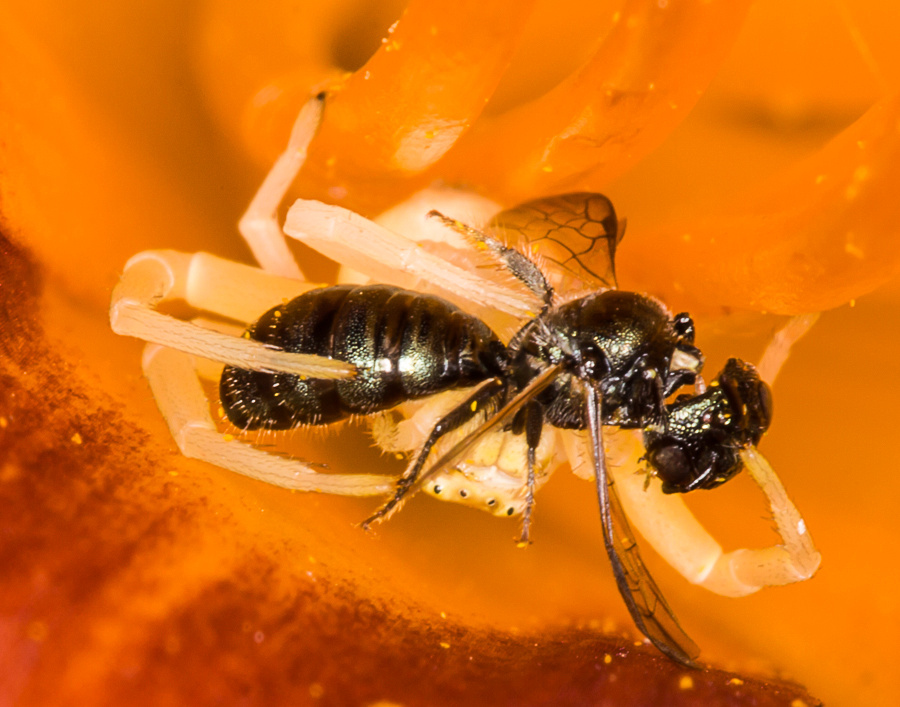

[waspp]
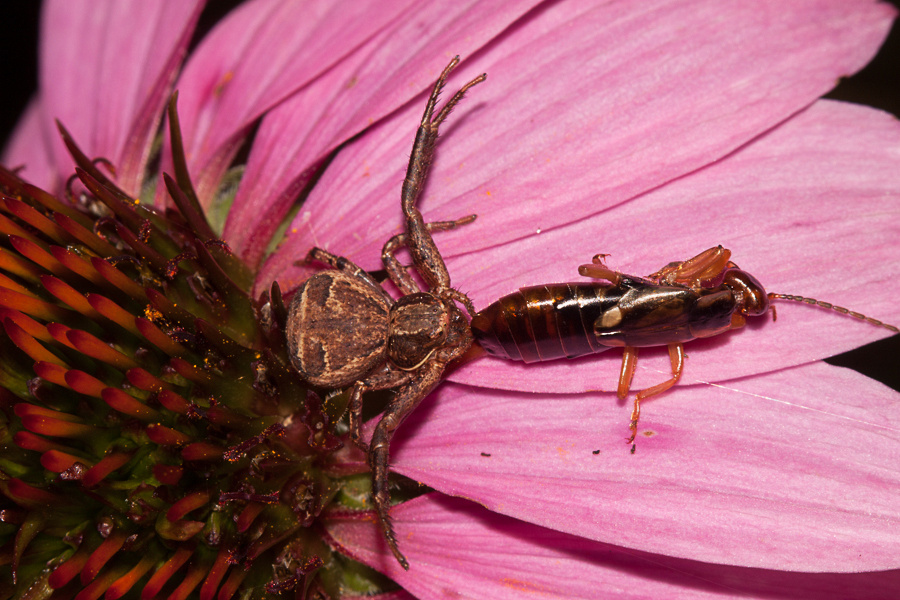

[different species of crab spider, not white, eating an earwig that it had captured]
In addition, the crab spiders seem to sometimes share hunting, and the subsequent meal, with ambush bugs, which have a very similar hunting pattern, and will often be seen in the same flower as the crab spider - although i have never seen the spider eating or attacking the ambush bug.
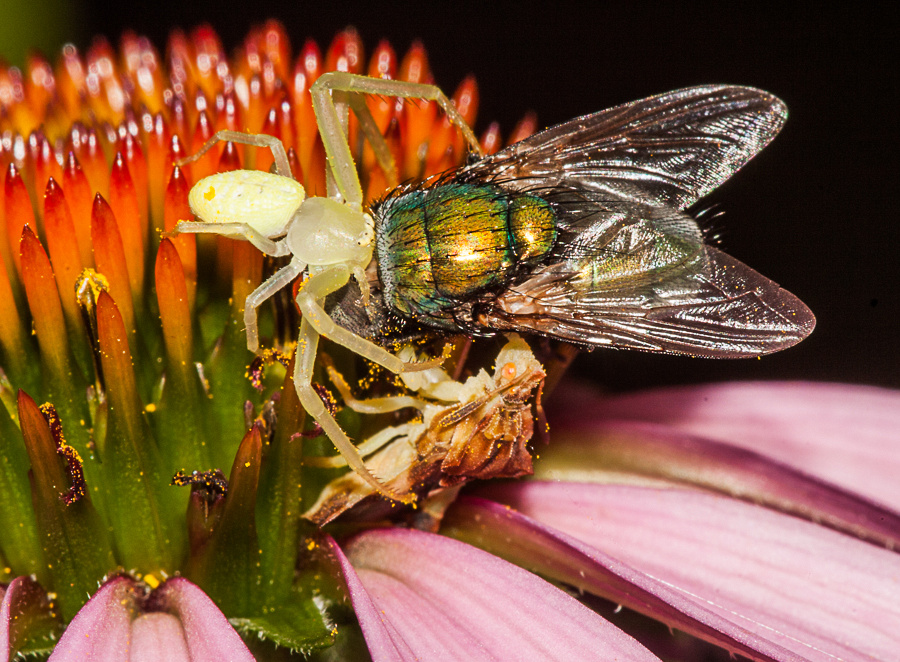

[crab spider, upper left, eating from the fly at the junction between the thorax and abdomen.
ambush bug, beneath it, sucking out the abdominal contents]
The males are much smaller: with bodies just a few millimeters across. Although I have occasionally spotted them, i see them much less commonly. Following is a male mating with a female on what i presume is her nest:
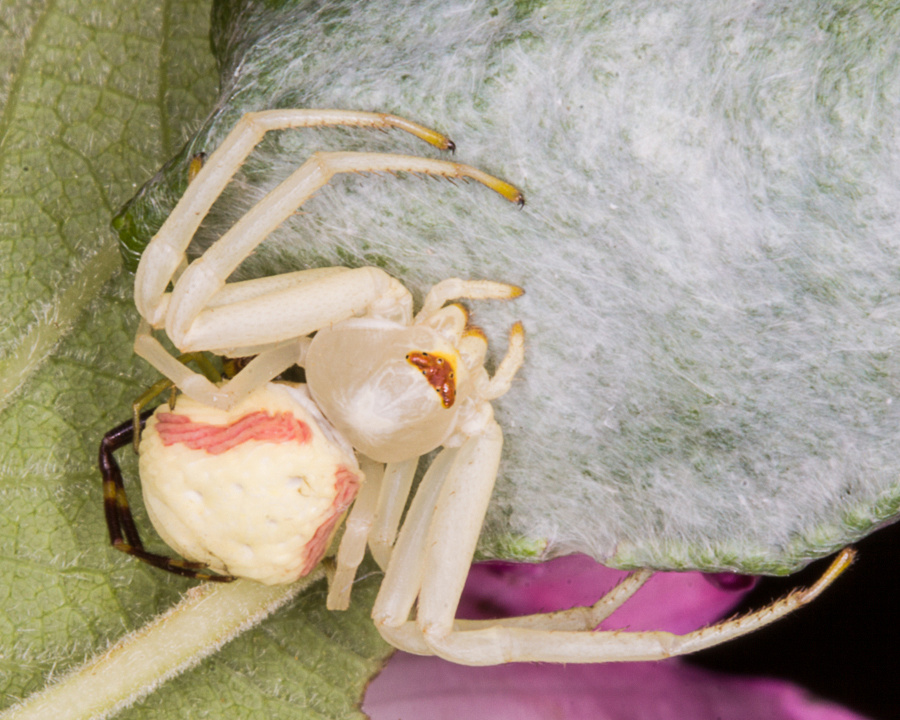

[note the darker legs of the much smaller male, protruding from beneath the abdomen]